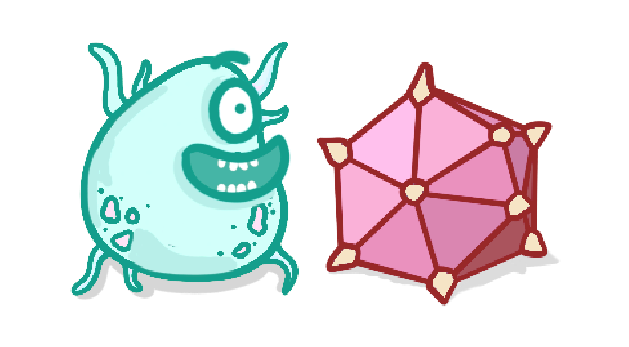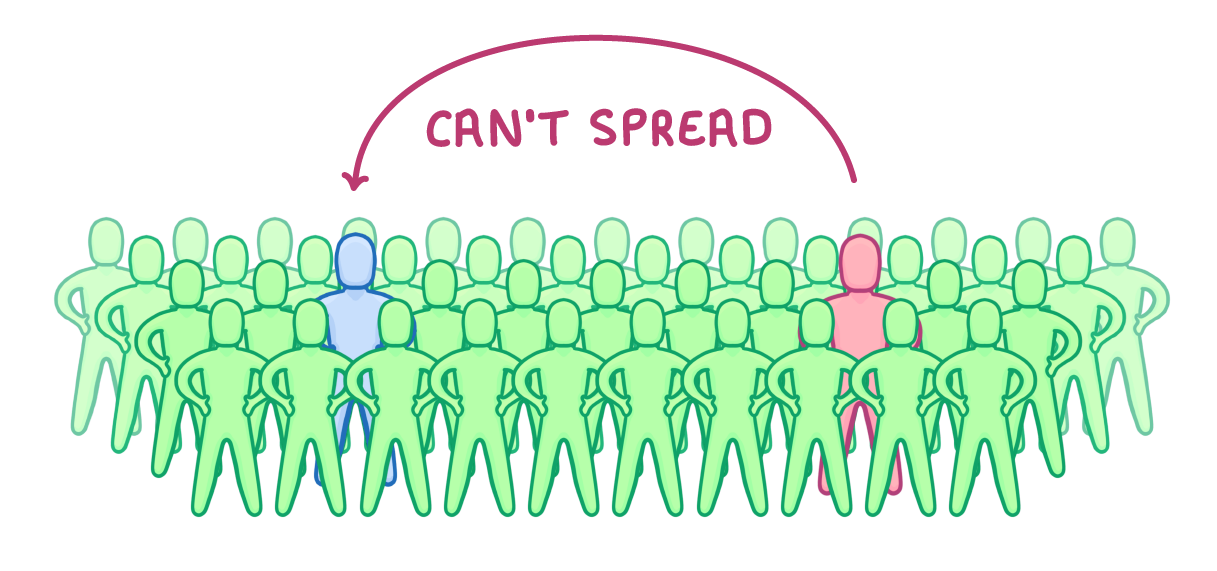Vaccinations & Immunisation
This lesson covers:
- How vaccines work
- The pros and cons of vaccines

What does a vaccine contain?
Small quantities of fully active forms of a pathogen
Small quantities of dead, weakened, or inactive forms of a pathogen
Antibiotics to kill pathogens
|

Can vaccines be made against both bacterial and viral diseases?
Yes
No
|
True of false? By the time we're adults we've already been vaccinated against multiple diseases.
True
False
|
How do vaccines work?
They improve our defences so that no pathogens can enter our body
They expose us to the antigens of a pathogen so that we can develop immunity to it
They introduce cells that patrol the body to fight future infections
|

Benefit of widespread vaccination
Widespread vaccination campaigns can prevent outbreaks of disease (epidemics). This is because if a large enough portion of the population is vaccinated, it makes the spread of disease from person to person unlikely.
As a result, the whole population becomes protected - not just those who are immune.
We sometimes call this herd immunity.
What are the potential drawbacks of vaccines?
(Select all that apply)
They don't always give full immunity to the disease
They can cause mild symptoms such as fever or a sore arm
They reduce the spread of disease from person to person
They can (in rare cases) cause severe reactions such as seizures
|